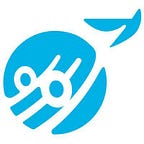Awêre para Kisile
By Mariana Guerra (Brazil).
(This post originally appeared on Participate2015.org)
Awêre para Kisile — “That everything goes well for those who don’t have a name yet”
What do we have in
common?
We, caboclos, ribeirinhos (riverside-dwellers), people of African descendants, youth, slum-dwellers, Indians, men and women, human beings, assembled at the Tijuca Forest, in the month of July of 2013, send our message to the planet, trying to reach primarily the people with decision-making power over the policies that will affect our lives and that of our Mother Earth from 2015 and on.
While analysing the policies and programs created from the Millennium Development Goals (MDGs) and the proposals by the High Level Panel for defining a post-2015 development agenda, we did not identify in them our world views or the worries of our brothers and sisters. We recognise, however, some indicators that we do agree with, but which in practice do not produce the desired effect.
We feel that in this way we continue to develop a death plan for the planet and all its inhabitants. But we do not remain still, from our own diverse territories we fight for Life and here we present some elements considered necessary for a global life plan. In the global life plan, everything is interconnected. We depend on each other, humans, nature, government bodies, we are all part of a whole.
How did we make this work?
We took our time getting to know each other and the reality we came from. As we explored the concept of “extreme poverty”, it was clear that each person had their own experience and their own way of talking about it. However, little by little, the group found common ground, and we built our own way to talk about ‘development speak’ (development, economy and dignity).
Working in small groups, and using various techniques allowed everyone to express themselves freely and comfortably, in talking about very complex issues, and at the same time relating it to their own lives. We used drawing, theatre (Augusto Boal), video (The Story of Stuff), network. It was a very artistic group and every night we played music together, read poetry and painted which gave us a sense of the diverse stories of the panelists. Reflection was also a key element to the week, as each day someone summarised and analysed the day, and we would watch the video the morning after.
[youtube=http://www.youtube.com/watch?v=ZfolCspvnWk width=”666" height=”375"]
Having such a diverse group made for an incredibly rich and interesting week, yet it undoubtedly presented some challenges. The panelists were really worried to be able to show that is possible for them to work together, and use their differences to enhance the process. There is no doubt in my mind that they achieved this. Rafael, from Espirito Santo, suggested that this group could continue to work together and monitor the proposals for post-2015 and the public policies created by the government from the ground.
Building a message
Together we felt that there were three “big points”:
• The life’s plan
• The locks
• The ways
Our message is Awêre para Kisile which shows the diversity of the group and Brazil and the possibility for us to all to work together. Awêre is a Tupinambá indigenous word to say “that everything goes well”, and was used continuously by the indigenous panellists. Kisile is a Bantu African word that means “those who don’t have a name yet” and was used to talk about the people we can’t leave behind. So we joined the two words to say: That everything goes well for those who don’t have a name yet.
